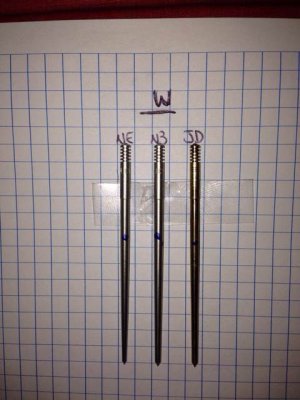Speaking with the tuner about my dilemma, unfortunately he hasn't had a 2014 bike engine apart yet so can't tell me if there are any difference in the crank case design from 2012/2013 that would cause my jetting requirements to be so different (although I note that I am currently using the same jetting as Simmo and whilst he raves about the jetting and gets good economy I am burbly and rich and using lots more fuel).
One thing he did suggest though is to compare the CDI units from '13 to '14 and see if they are different as apparently sometimes the curve of the ignition can cause the bike to appear rich in a certain area.
Looking at part #'s - the 2012 and 2013 (e start) bikes use part# ME250634007, 2013 racing uses part# EE511003013CT; 2014 racing/e-start bike uses part# EE51100GG-CAB-1.
So it looks like the '14 does indeed use a different CDI....
One thing he did suggest though is to compare the CDI units from '13 to '14 and see if they are different as apparently sometimes the curve of the ignition can cause the bike to appear rich in a certain area.
Looking at part #'s - the 2012 and 2013 (e start) bikes use part# ME250634007, 2013 racing uses part# EE511003013CT; 2014 racing/e-start bike uses part# EE51100GG-CAB-1.
So it looks like the '14 does indeed use a different CDI....





